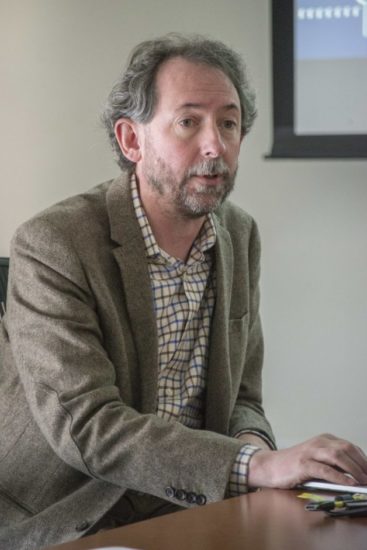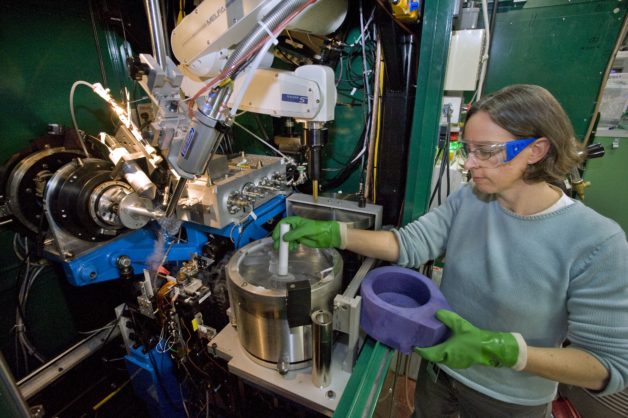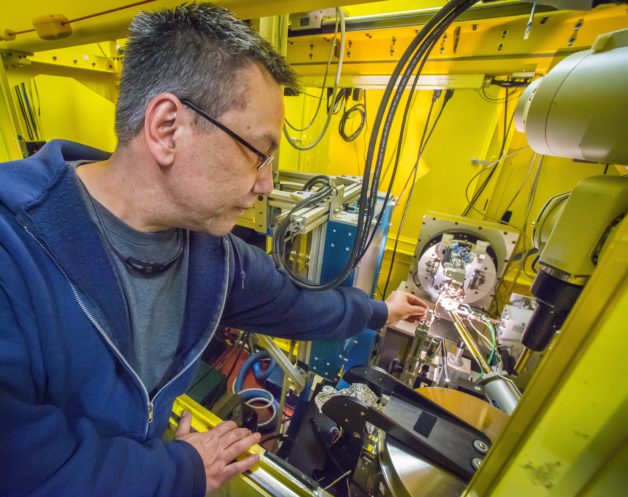Adapted from a Berkeley Lab news release by Greta Lorge
A recently awarded National Institutes of Health (NIH) grant will help integrate existing structural biology resources at the ALS to better serve users. The funds will help establish a centralized collaborative mechanism, called ALS-ENABLE, that will guide users through the most appropriate routes for answering their biological questions.
The initiative brings together four groups of scientists who, for the past 15 years, have independently facilitated access to crystallography and small-angle x-ray scattering (SAXS) capabilities on eight ALS beamlines that serve the structural biology community. Now, user proposals that are awarded beam time will be discussed together by this team of expert scientists to look for ways to enhance the experimental outcome—for instance, by using a different beamline or combination of techniques. Users may also contact the team in advance of submitting a proposal to get advice on the best approach. In addition, the collaboration will streamline user training and outreach.

“Leveraging the capabilities and expertise across the beamlines is designed to optimize the chances of successful structure determination for routine and challenging problems,” said Paul Adams, director of Berkeley Lab’s Molecular Biophysics & Integrated Bioimaging (MBIB) division and principal investigator on the grant.
“It allows the user to focus more on the biology problem rather than worrying about the technique,” added Corie Ralston, a biochemist in MBIB and head of the Berkeley Center for Structural Biology (BCSB; Beamlines 5.0.1, 5.0.2, 5.0.3, 8.2.1, and 8.2.2).
ALS-ENABLE, which stands for ALS Efficiently Networking Advanced BeamLine Experiments, has three technology operation cores to address specific needs: rapid-response crystallography; high-quality and high-throughput SAXS; and specialized crystallography.
For x-ray crystallography projects that are relatively straightforward, such as determining the position of different small molecules bound to the same protein, a fully automated pipeline will be put in place. Users’ samples will be mounted at the beamline by robots, the diffraction data will be automatically collected and processed, and the researchers hope that the structure will be automatically solved. “It will be completely hands-off, which will significantly increase efficiency,” said Ralston, who will lead the rapid-response core.

SAXS can provide lower-resolution data for macromolecules in solution for samples that are not tractable to crystallization. Often, solution scattering and crystallography are complementary. As an example, the overall shape of a protein complex could be determined with the former. Then with the latter, the individual components are imaged and used to figure out how they fit together. Greg Hura, a biophysicist in MBIB and scientist at Beamline 12.3.1 (SIBYLS), will lead the SAXS core.
Really challenging problems, such as functional dynamic studies and membrane protein structures, almost by definition don’t work using established protocols and require an expert hand. Multi-temperature data collection techniques and combining data from dozens to thousands of crystals are still under development but will still be accessible under ALS-ENABLE. The specialized crystallography core will be led by James Holton, an active developer of these techniques, biophysicist in MBIB, and director of Beamline 8.3.1. This core will customize and apply the latest developments in the field on user projects that promise to benefit from them.

Jay Nix, beamline director for the Molecular Biology Consortium at ALS (Beamline 4.2.2), will lead user training and outreach efforts, which will incorporate onsite workshops, remote training and online materials. In addition, web tools that have been developed independently by various members of the team will be consolidated onto a single website so as to be more accessible to users.
Other co-investigators on the grant are James Fraser, an associate professor in the Department of Bioengineering and Therapeutic Sciences at UCSF, John Tainer, an MBIB visiting scientist and a professor of Molecular & Cellular Oncology at the University of Texas MD Anderson Cancer Center, and Banu Sankaran, an MBIB research scientist and head of the BCSB Collaborative Crystallography Program.
“I’m very excited that NIH has given us the opportunity to work together to provide structural biology users at the ALS with a coordinated and efficient resource that will stay at the forefront of technology,” added Adams.